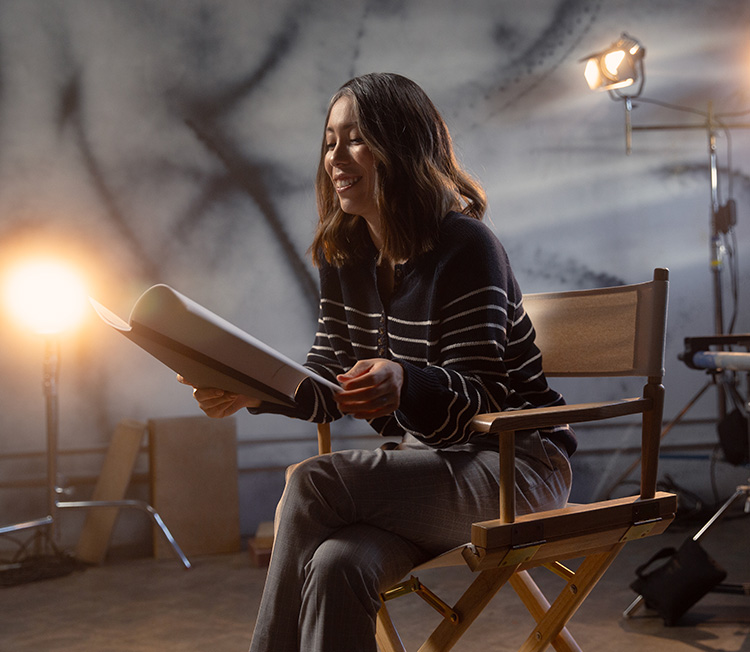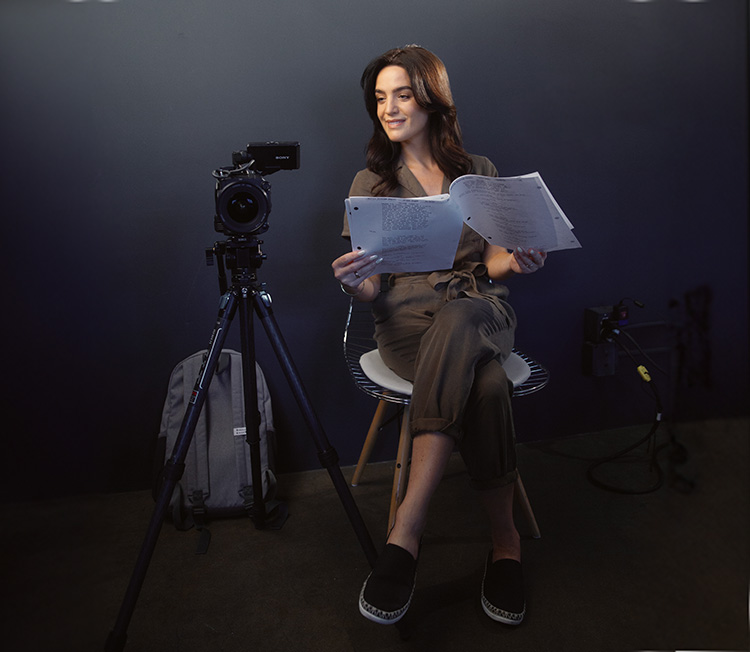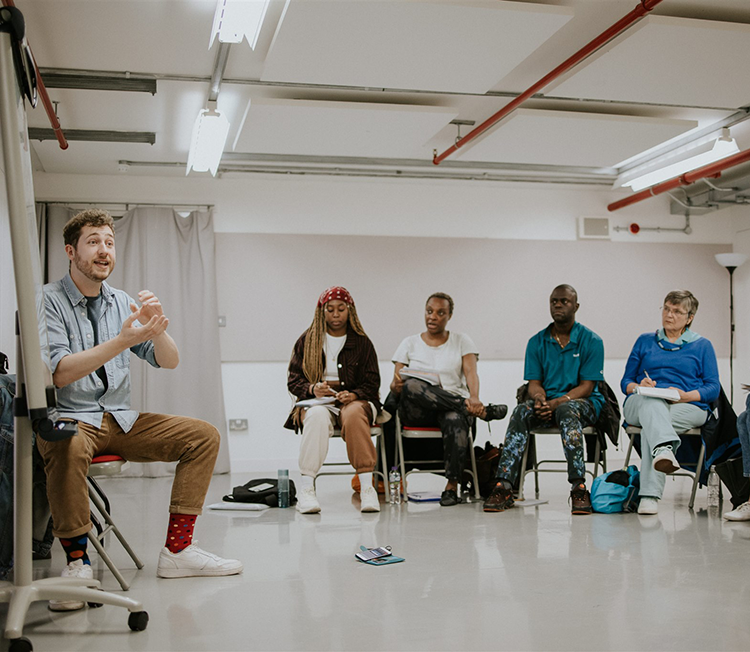Ita O’Brien asks, “How do you navigate the intimate and sexual content serving the director’s vision while keeping you safe?”
There is a fine line between being open or being vulnerable; the shift can happen in a moment. This work demands vigilance, presence and mindfulness in order to stay on the right side of doing what is right for you. Often actors are willing to say yes, such that they overstep their own boundaries of what is actually acceptable to them, only to have feelings surface after the event.
Your agent calls you up. A fabulous part. You read the play. The character bursts on set furiously making out with a work colleague… and so it continues… It is a great play, the issues explored are complex, with lots of intimacy, sex, some nudity and a little coercion and abusive sexual content thrown in for good measure. How do you navigate the intimate and sexual content, serving the director’s vision while keeping you safe?
It is easy to feel that if you have any questions regarding the intimate content, you might be considered a trouble maker, or an actor who is not up for all that the role demands. But times have changed. We are in a new era in the industry, with the #MeToo and #TimesUp movements, and with Codes of Behaviour being drawn up for theatre, TV and film, such as those created by the Royal Court in November 2017. The Intimacy on Set Guidelines are a way to navigate the intimate content contained in the production.
If you find yourself up for this kind of part, here are some key points to remember:
1. Be ready from the audition
If intimacy is required, then prepare. If you are asked to work with a partner for the scene, go through the guidelines, agreeing the physicality of how you will interpret the scene, agree areas of touch, gaining consent, and then sculpt the physical scene ready to show to your director. You should not be asked to be nude or to go through sexual content on a first audition.
2. Start the conversation early
You’ve been offered the job! Congratulations. Before accepting the role, and if the director hasn’t brought up the intimate and sexual content, ask to have the conversation. This is creating the umbrella under which the work can take place safely. Just having the conversation means that the subject is in the open and can be discussed throughout rehearsals and into performance. Make sure you have thoroughly researched and considered the script or play so that you can offer suggestions.
Speak about the content in an open and adult manner, using the proper names for body parts and activities, such as breasts, intercourse, etc. Do not titivate or infantilise, avoiding euphemisms or slang terms. Approach the conversation as a professional, speaking to a fellow professional, all in service of the work. Ask the director for their vision of the intimate content, and their method of working. As the actor, you want to deliver the best possible scene, considering the narrative, character, and relationship.
If they have not thought that far ahead, invite them to consider the intimate content, so that everyone is on the same page with the degree of intimate physicality, and the nudity required. This then can be discussed with your agent and specified in your contract. This is the point where, if the intimacy or nudity required does not sit well with you, or with how the director wants to work, you can make an informed decision to accept, or say no to the job. Remember, your career is defined more by what you say no to, than what you say yes to. Saying no for the right reasons leaves you open and ready for work that will better serve you as an artist. Once on the job…
3. Maintain a good warm up
When rehearsing or performing scenes with intimate content, you need to make sure that you are present, grounded and open, so that you can listen to yourself and really consider if the content being rehearsed is okay for you. A good warm up supports you in connecting, engaging with your physicality, and being present in the moment.
In theatre, the warm up is often part of the daily rehearsal practice. If not, take time to do it yourself. When filming, it will be your responsibility to prepare for the role, including a warm up, so find a time to physically prepare before you get to set.
4. Be open – not vulnerable
An actor wants to work in a state of being open, not vulnerable. Being open is being clear, present, and grounded so you can be autonomous, and in a state of readiness for the work. Being vulnerable is when the actor has been pushed into something that is not okay for them, where their autonomy has been taken, and they are being done to, rather than being in agreement and consenting to the work.
There is a fine line between being open or being vulnerable; the shift can happen in a moment. This work demands vigilance, presence and mindfulness in order to stay on the right side of doing what is right for you. Often actors are willing to say yes, such that they overstep their own boundaries of what is actually acceptable to them, only to have feelings surface after the event.
5. Agree time out
In rehearsals when working with challenging content, it is good to agree a “time out” with all: the actors, director, stage manager if in theatre, or 1st AD if on set, or a halt to the action, if filming. This allows the actor to be more comfortable in exploring or acting out challenging material, knowing they have the autonomy to halt to the action at any time and take a break.
6. Block the scene
You will achieve a better scene when the storytelling, the character, the power play, and the beats of the scene are served. A discussion will highlight if the intimacy or nudity is gratuitous, or superfluous to the writing. Once the scene is discussed and the basic shape of the physicality agreed, then follow the guidelines:
- Always have a third-party present: Very often the director will have the discussion and then say, “You two go and work it out for yourselves.” As soon as two actors are in a space alone, the boundaries between professional and private selves can be blurred. Keep the work professional by asking to have the assistant director, stage manager, or even a fellow actor with you.
- Agree areas of physical touch: This is the most important step of the guidelines, giving space and time for agreement and consent regarding your physical body for both actors. Areas of agreed touch can always change and adapt. Agreement and consent should be re-established each and every time when working with intimate scenes. This allows the actor to be personally safe, and free to serve the character’s physical and emotional expression.
- Sculpt the physical actions using plain words: This anchors the physical blocking, like choreographing a dance. It is mechanical and structured, going over the blocking until the shape of the scene is in your body.
- Separately chart the emotional journey of the scene: As with any scene, start with your character’s intention and obstacles, and go from there. Very often when the emotional journey is worked on, there can be realisations about the story telling, that can then be put into physical action. Allowing the scene to develop and adapt as needed.
- Integrate physical actions and emotional content for a seamless scene: By this stage, when all of this is embodied and clear, you can get on with the job of acting, because you understand your boundaries and those of your partner and can be free and liberated.
7. Beware of ‘Just…’
Historically, there has been no best practice or professional guidelines to follow for intimate content. Some directors have developed excellent practice. However, many have not, and find the work either embarrassing and so avoid it, or possibly ask something of their actors that is unacceptable. In a worst-case scenario, a director can be abusive to their actors. Many times, the director will get to the intimate content in the last week of rehearsals, saying, “Just kiss,” or “Just go for it,” or worse, “Just improvise that.” This is where an actor can find themselves being treated in ways that are not suitable.
When a director asks for you to ‘just…’, offer to go through the guidelines first, before embarking on the physicality. Or another option for improvisation is with no touch, exploring the emotional and physical dynamic, being ultra-present with no actual touch. The director can then pick out the physicality that they like and go from there, using the Intimacy on Set Guidelines to anchor the scene.
8. Keep nudity controlled
Consider what degree of nudity you are comfortable with and have this specified in your contract. There should be a closed set whenever intimate scenes are involved. Bare genitals should never touch. The wardrobe department will provide you with modesty patches and pouches. Nudity is from action to cut, and at all other times wardrobe will provide you with a dressing gown or suitable covering.
9. Don’t take it home with you
When you have finished your rehearsal or filming on set, it is most important to bring yourself back to centre, letting go of wherever you may have gone to in order to serve the character, storyline, and emotional journey. Find exercise techniques that allow you to release and come back to self, so you can go home, having done a good day’s work, stepping back into the personal from the professional body.
Using the Intimacy on Set Guidelines enables you to approach intimate scenes with confidence. It is not necessary to feel personally vulnerable, or compromised. Please spread the word. It is all of our responsibility to get the industry to adopt best practice.
Ita O’Brien is an Intimacy Coordinator and Movement Director. She works in film, TV, and theatre and regularly runs workshops on Intimacy. She also teaches Intimacy in leading drama schools.
Read through the Intimacy on Set Guidelines on Ita’s website, as well as her acknowledgements for the guide. Watch a 5 minute film of her work.












